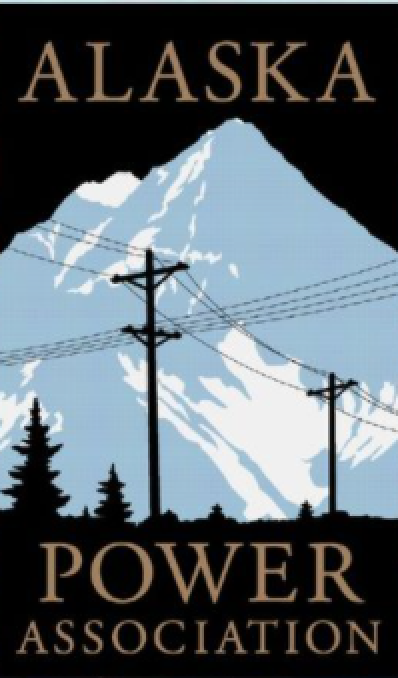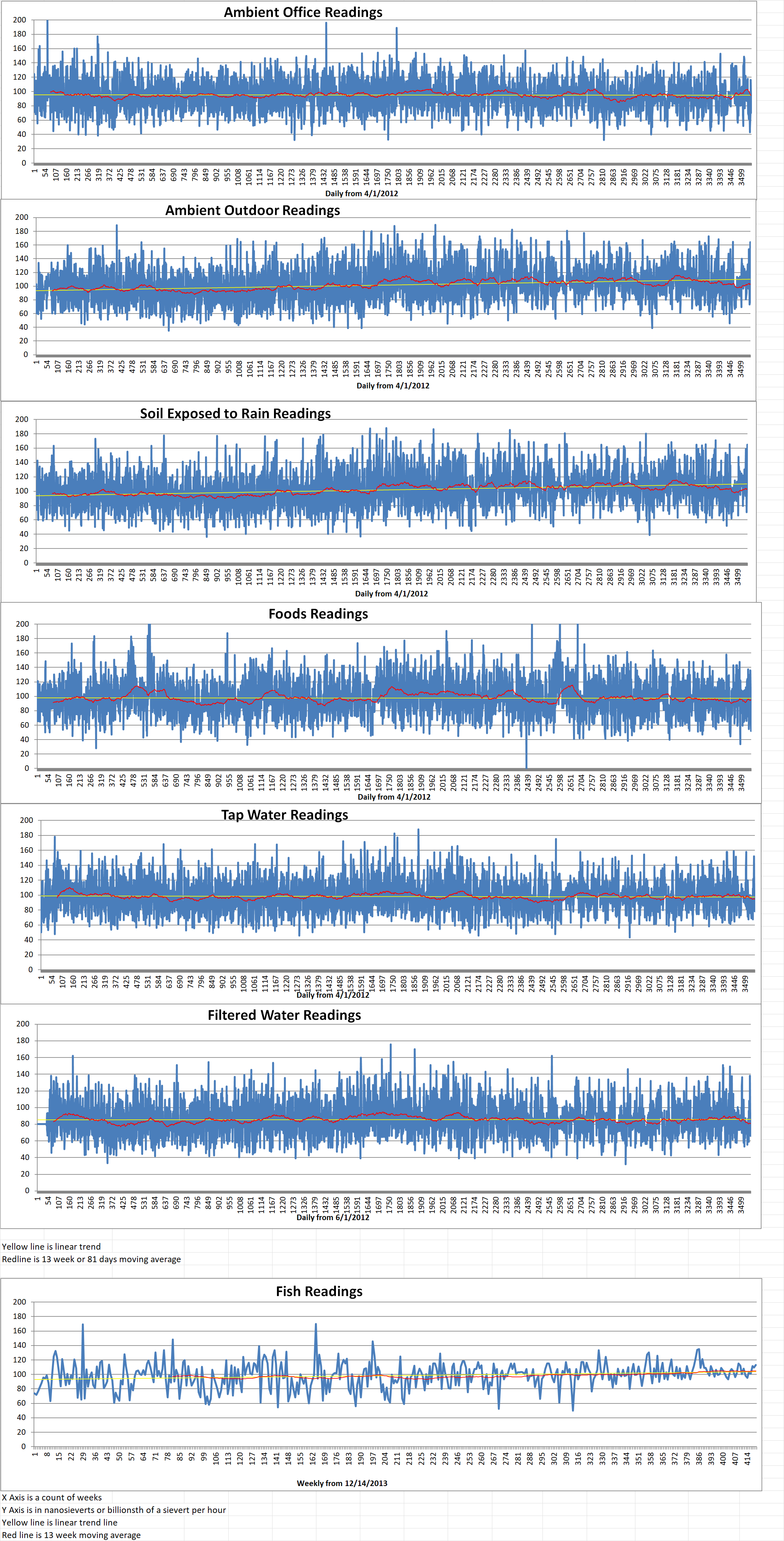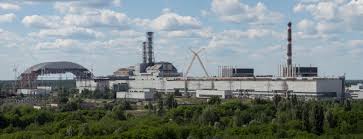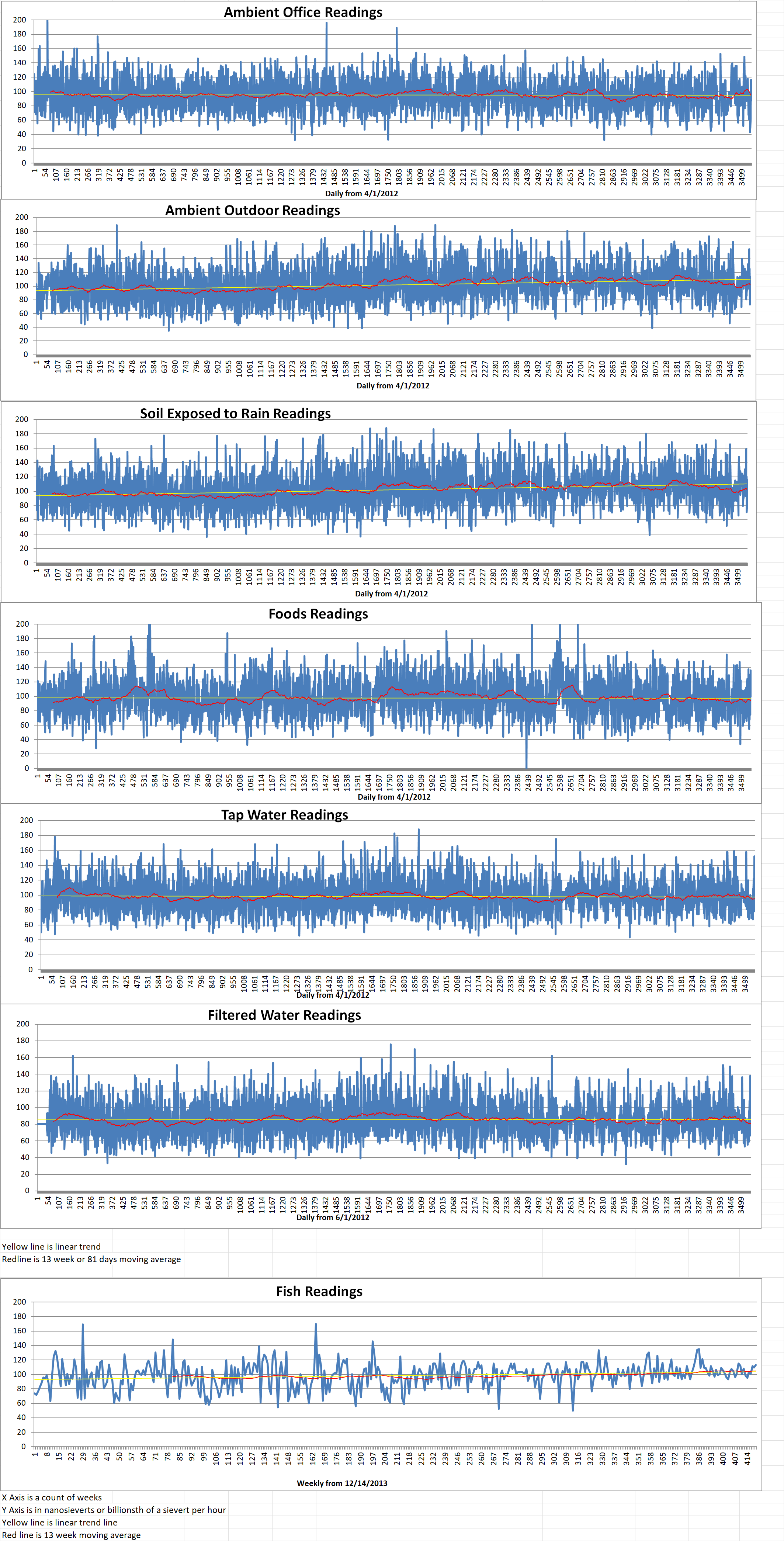Part 2 of 2 Parts (Please read Part 1 first)
Microreactor technology is still under development. Several companies are working on various microreactor designs. Christina Carpenter is the director of the Division of Environmental Health, Department of Environmental Conservation. During a March 11 House Resources meeting she said that the expected timeframe for proven microreactors to enter the commercial marketplace is five to seven years. Carpenter commented that a conventional nuclear power station requires a fifty-mile emergency planning zone. On the other hand, the emergency planning zone for a microreactor ends at the facility door. This makes it possible to employ local decision making for microreactor siting.
Holdman told House Resources that, regardless of the proposed legislation, the federal Nuclear Regulatory Commission (NRC) would be responsible for regulating the manufacture of microreactor power plants. Any project involving the installation of a microreactor in Alaska would require an NRC license. She said, “They have a very robust licensing process, both on the technology side and for site licensing.”
A critical part of the NRC’s role would be to ensure that microreactors meet required safety standards. In addition, a microreactor installation would need the appropriate state permits, with the Department of Environmental Conservation (DEC) as the lead state agency.
Holdman said that two features of microreactor designs would make the microreactors very safe. First, the nuclear fuel for the microreactors comes in the form of small pellets. The uranium used for nuclear fission is encased in layers of materials designed to withstand temperatures and pressures higher than those reached in the nuclear reactions. Second, the reactors have passive cooling systems that would cool the nuclear fuel without the need for operational intervention or a backup power supply in case of a system malfunction.
The Alaska Power Association (APA) is the Alaskan trade association for electric utilities. In testimony to House Resources, the APA expressed its support for the propose legislation. Crystal Enkvist is the APA executive director. She said that microreactors, “are a viable source of power that have the potential to lower the cost of energy for Alaskans, decrease dependency on diesel, better position our state for economic development opportunities, and raise Alaska’s profile as a hub of energy innovation and energy independence.”
Some public comments on the bills expressed concerns about the safety of nuclear power and the potential for nuclear contamination. Alaska Community Action on Toxins argued that nuclear power is not clean energy. They said that nuclear power is destructive throughout its life cycle from uranium mining, predominantly on indigenous lands, through the enrichment process to the problem of the disposal of radioactive waste.
Some people worry about the safety of operating a nuclear facility in Alaska, especially given the high frequency of earthquakes in the state. Another issue that was raised was the potential for a terrorist attack on a nuclear power plant at a remote location.
Dr. Ashley Finan is the director of the Idaho National Laboratory. She addressed some of these concerns at the House Resources Committee meeting. She said that NRC regulations ensure that a nuclear facility has a high level of safety, combined with an emergency planning zone that represents the maximum area might be impacted by an accident. Despite some high-profile nuclear power station accidents over the years, the record of minimal contamination from nuclear energy has been very positive. Most nuclear contamination originates from a time of nuclear weapon production. Reactor technology is being developed to be compatible with seismic activity.
Waste from nuclear power plants is very closely managed in the U.S. Although the U.S. does not currently have a spent nuclear fuel disposal site, the Department of Energy is seeking a site using a consent-based process that has worked successfully in Finland and Sweden. Finan said that she does not think that anyone is proposing a nuclear waste site in Alaska.
Blog
-

Nuclear Reactors 1013 – Alaska Considering Nuclear Microreactors – Part 2 of 2 Parts
-
Nuclear News Roundup Mar 18, 2022
How Russia’s invasion is affecting U.S. nuclear eenews.com
Newcleo, ENEA to cooperate on advanced reactors world-nuclear-news.com
Ukraine, climate, SMRs: EU and IAEA nuclear talks world-nuclear-news.com
UK repatriates Australian nuclear waste world-nuclear-news.com
-

Geiger Readings for Mar 18, 2022
Ambient office =81 nanosieverts per hour
Ambient outside = 127 nanosieverts per hour
Soil exposed to rain water = 128 nanosieverts per hour
Red bell pepper from Central Market = 109 nanosieverts per hour
Tap water = 87 nanosieverts per hour
Filter water = 75 nanosieverts per hour
-

Nuclear Reactors 1012 – Alaska Considering Nuclear Microreactors – Part 1 of 2 Parts
Part 1 of 2 Parts
Two bills were introduced to the Alaska Legislator by Governor Mike Dunleavy recently. House Bill 299 and Senate Bill 177 would simplify the legal requirements for the implementation of nuclear microreactors in Alaska. This will potentially encourage the use of these devices in Alaska. A microreactor is a small, self-contained nuclear reactor that can generate electricity and produce heat. A microreactor would be constructed in a factory and then transported to a site for installation. Typically, the device should only need to be refueled about every ten years. Some designs call for the device to be totally replaced every ten years rather than refueled.
Current Alaskan statues and associated regulations are designed to deal with massive, traditional nuclear power stations. The idea behind the two proposed bills is to make laws and regulations more appropriate for microreactors. This should make the use of this new technology more feasible. Essentially, the proposed changes to laws and regulations would enable local decisions making on the placement of microreactors by removing a current requirement to situate microreactors on land designated by the Legislature. With respect to microreactors, state agencies would not be required to conduct studies into changes in laws and regulations needed for the installation of nuclear power plants. A microreactor would be defined as a nuclear power reactor with a maximum output of fifty megawatts.
Proponents of the potential use of microreactors in Alaska argue that such devices could become a clean source of energy, with zero carbon emissions. They could be utilized in combination with renewable energy sources. Gwen Holdman is director of the Alaska Center for Energy and Power at the University of Alaska Fairbanks. During a February 23 meeting of the Senate Labor and Commerce Committee, Holdman suggested that micronuclear power could be used on the Railbelt energy grid, as an alternative to battery energy storage, for regulating variable renewable energy sources. This could be done in conjunction with a proposed renewable portfolio standard for the Railbelt.
In a March 11 meeting of the Alaska House Resources Committee, Holdman commented that the power output from microreactors could be appropriate for the power needs of hub communities at several locations around Alaska, including Anchorage, Fairbanks, Bethel, Nome, Kotzebue, Dillingham, Naknek and Tok. However, microreactors are unlikely to prove economically viable in small, isolated rural communities. In addition to being a source for electrical power, microreactors could provide heat for buildings and industrial processes. Calculating the exact economics of all this remains a work in progress.
Currently, the U.S. Air Force plans to install a microreactor with a power output of about five megawatts at Eielson Air Force Base near Fairbanks. This device is intended to supply some of the electricity and heat for the base. Installation of the system is scheduled to begin in 2025, with commercial operation beginning in 2027.
Research into microreactors is focused on the Idaho National Laboratory’s Reactor Innovation Center. The Alaska Center for Energy and Power (ACEP) is collaborating with the Idaho National Laboratory and other parties to develop a roadmap for the potential use of microreactors in Alaska, said Holdman. ACEP has been studying the microreactor concept for several years.
Jess Gehin is associate laboratory director at the Idaho National Laboratory. He told the Senate Labor and Commerce Committee that the Copper Valley Electric Association is working with a microreactor developer on a feasibility study for microreactor use.
Please read Part 2 next -
Nuclear News Roundup Mar 17, 2022
Massive 7.3 earthquake hits Japan near site of Fukushima nuclear disaster fortune.com
U.N. chief: prospect of nuclear conflict back ‘within realm of possibility’ over Ukraine reuters.com
Report to Congress on AUKUS Nuclear Cooperation news.usni.org
District heating project launched at Hongyanhe world-nuclear-news.org
-

Geiger Readings for Mar 17, 2022
Ambient office = 70 nanosieverts per hour
Ambient outside = 164 nanosieverts per hour
Soil exposed to rain water = 165 nanosieverts per hour
Jalapeno pepper from Central Market = 52 nanosieverts per hour
Tap water = 83 nanosieverts per hour
Filter water = 66 nanosieverts per hour
-

Nuclear Reactors 1011 – Concerns Grow Over Russian Occupation Of Ukrainian Nuclear Facilities – Part 2 of 2 Parts
Part 2 of 2 Parts (Please read Part 1 first)
Allison Macfarlane is a former chair of the U.S. Nuclear Regulatory Commission. She said that the history of nuclear regulation in the U.S. shows the great importance of having highly trained staff committed to ensuring system safety around the clock. She added, “You want nuclear plant operators to be at their best — not tired, not distracted. If they are worried about their families, or in Chernobyl’s case, not allowed to leave and reduced to eating dried porridge and canned food, they may miss things and make mistakes.”
Over the years, the NRC inspection and investigation reports have mentioned a limited number of examples of operator mistakes that jeopardized or undermined operation of safety systems that could be called on in emergencies. While the NRC found that nearly all of the ninety-three operating U.S. reactors met commission safety and security requirements in 2021, two did not. The findings were based on thousands of inspection hours by the NRC.
The two nuclear power plants that failed to meet NRC requirements were Callaway in Missouri and Davis-Besse in Ohio. They were cited for “low safety significance” but the NRC said that their performance called for special inspections to assure that corrective actions are taken to prevent recurrence. Macfarlane currently directs the School of Public Policy and Global Affairs at the University of British Columbia. She said, “These plants are really complex. Safety culture [at U.S. nuclear plants] is regulated because we’ve deemed it really important.” She went on to say that the NRC policy requires not only adherence to rules and regulations but also management’s care to instill a commitment to safety. She added that “If you don’t have it, you will potentially have issues that could lead to major problems, a major accident.”
NRC case files report incidents like one in 2008 when two divers cleaning sludge from an underwater opening to water pumps at the Nine Mile Point plant in upstate New York lost control of a suction hose. This allowed it to be sucked into a pump which was fouled. The NRC said that there was no threat to operations. However, the NRC found “significant weaknesses” in the operator’s response to the incident.
The operators failed to require a rigorous planning process even though the underwater clearing operation had never been done before. Contrary to expected best practice, the divers did not immediately halt work when the incident occurred.
A senior official of the then-plant owner, Constellation Energy Nuclear Group, admitted to the NRC officials, “[We] had missed some things we shouldn’t have missed. … We had tunnel vision to some degree. The fact we didn’t go into is why the event occurred.”
Edwin Lyman is the director of nuclear power safety with the Union of Concerned Scientists. He emphasized in a recent blog post that maintaining the integrity of the water pumps and other vital safety systems is essential to reactor safety and security. Lyman said that is a reactor cooling system fails, nuclear fuel rods can begin releasing radiation within hours.
Lyman said, “There are a number of events that could trigger a worst-case scenario involving a reactor core or spent fuel pool located in a war zone.” These include an accidental of intentional strike that could directly damage reactors. He added that,”extended loss of power that interrupted cooling system operations that personnel could not contain has the potential to cause a Fukushima-like disaster.”
Yesterday, Ukraine made a long-planned move to cut connection to the Russian electrical grid. They then connected to the continental European grid via Moldavia.
Kadri Simson is the European Union energy commissioner. She said that “This will help Ukraine to keep their electricity system stable, homes warm and lights on during these dark times,” Kadri Simson, the European Union energy commissioner, said in a statement. “It is also a historic milestone for the EU-Ukraine relationship — in this area, Ukraine is now part of Europe.” -
Nuclear News Roundup Mar 16, 2022
61 more employees being let go from Duane Arnold nuclear plant thegazette.com
Kentucky Senate committee approves measure seeking research on nuclear energy wtvq.com
How will SA be affected if a nuclear war broke out in Europe? This simulation thinks it has the answer timeslive.co.za
Pope Evokes Spectre of Nuclear War Wiping Out Humanity usnews.com
-

Geiger Readings for Mar 16, 2022
Ambient office = 92 nanosieverts per hour
Ambient outside = 104 nanosieverts per hour
Soil exposed to rain water = 104 nanosieverts per hour
English cucumbers from Central Market = 108 nanosieverts per hour
Tap water = 79 nanosieverts per hour
Filter water = 67 nanosieverts per hour
-

Nuclear Reactors 1010 – Concerns Grow Over Russian Occupation Of Ukrainian Nuclear Facilities – Part 1 of 2 Parts
Part 1 of 2 Parts
I have been monitoring the Russian occupation of the Chernobyl and Zaporizhzhia nuclear power plants in Ukraine during the Russian invasion. Since the situation is rapidly evolving, I decided I needed to revisit the subject.
For the first time in the sixty-six-year history of commercial nuclear power, operators must manage the exacting safety systems of a massive nuclear power plant under the guns of an occupying army that is bombarding civilian targets. The stress on the staff of Ukraine’s shuttered Chernobyl nuclear facility and the operating Zaporizhzhia nuclear power plant, both of which are under Russian control is a serious, growing issue according to the head of the International Atomic Energy Agency (IAEA) in Vienna. IAEA director General Rafael Mariano Grossi said, “I remain gravely concerned about the extremely difficult circumstances for the Ukrainian staff there.” The IAEA is currently receiving status reports from Ukraine’s nuclear regulator which is continuing to operate three of Ukraine’s four functioning nuclear power plants.
Two of the six reactors at the Zaporizhzhia plant were operating yesterday. They are under the direction of Russian operatives which includes representatives of Rosatom State Nuclear Energy Corporation (RSNEC) .
The operators of Zaporizhzhia nuclear power plant faced new challenges when the plant lost access yesterday to a third high-voltage line connecting the plant to the Ukrainian power grid. The nuclear plant has four high-voltage lines and a backup line. Two of the connections were damaged earlier in the Russian attack. One line and a backup remain connected, and the safety of the power plant is not threatened according to the IAEA. However, the plant had to reduce power production to adjust to the power line outages. If all electrical power is lost, vital reactor cooling processes will depend on emergency diesel generators which have limited fuel.
In the case of Chernobyl, two hundred and eleven technicians and guards are virtual prisoners inside the plant. They are working without relief “under enormous stress without the necessary rest,” says the IAEA. The Chernobyl plant was destroyed by an explosion in 1986 and is now encased in a steel dome as staff work to dismantle it and safeguard its spent nuclear fuel.
Grossi said that in order to assure the safety of the occupied plants, the “operating staff must be able to [fulfill] their safety and security duties and have the capacity to make decisions free of undue pressure.”
A report this week in the Wall Street Journal based on text messages exchanged with Chernobyl’s Ukrainian staff and other accounts describe a tense “hostage” situation that has deteriorated since the Russian troops took over the plant on Feb 24th. The article reported that workers during brief phone calls, told members of their families about headaches, dizziness, and extreme fatigue.
Adam Stein is an associate director for nuclear innovation at the Breakthrough Institute, which advocates for nuclear power. He said, “I am very concerned about the operators’ health and well-being. I consider that to be the primary risk at these plants at the moment. Due to undue stress and poor working conditions, the operators are definitely not able to perform their functions as well as normal. What happens if reactor operators decide they are not going to work because of the conditions at the plant? That’s speculative, but it’s a concern.” He also mentioned that there are concerns about workers’ ability to maintain facilities and make repairs.
Please read Part 2 next
